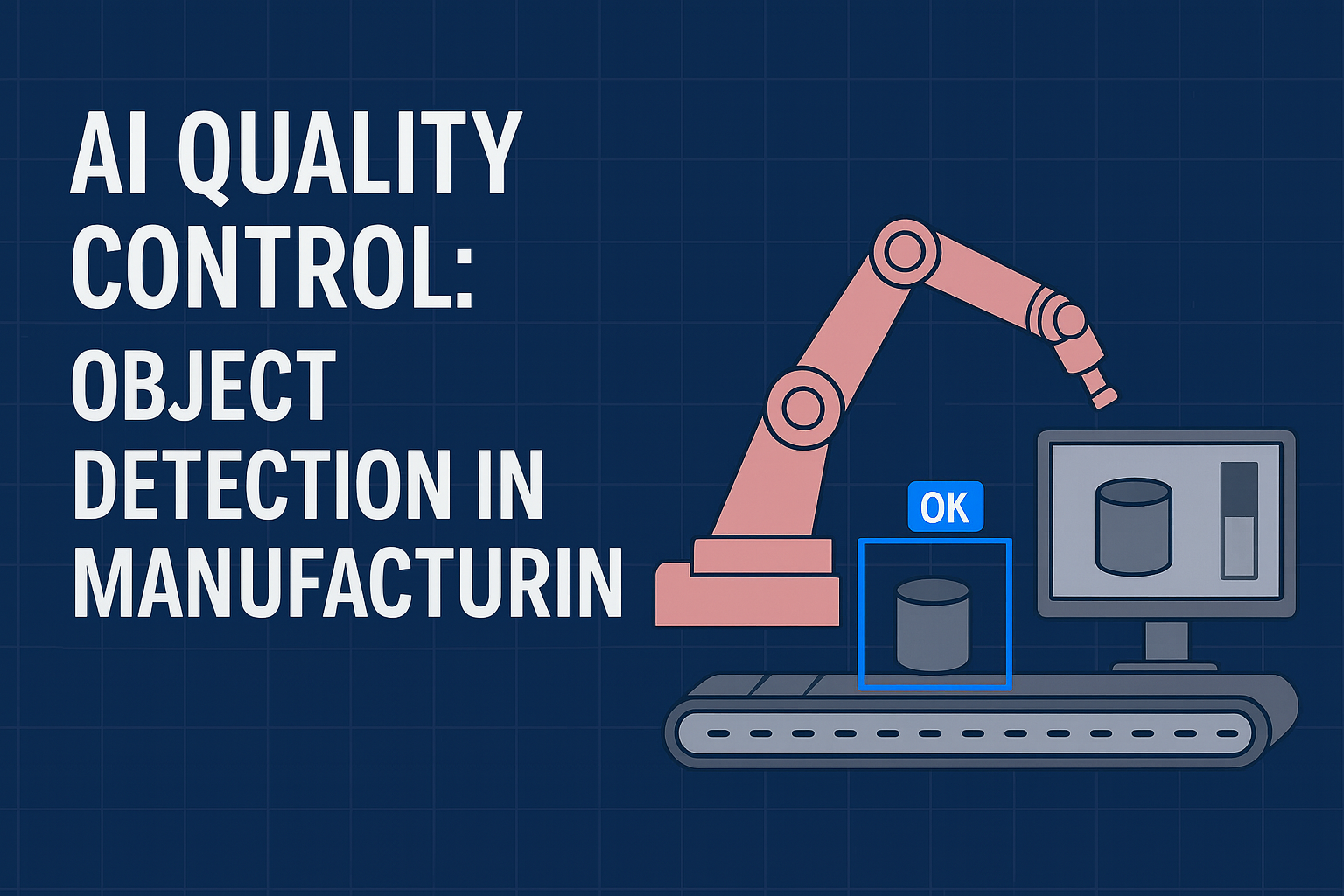Maintaining perfect product quality is absolutely critical in every competitive industry. To find flaws, quality control (QC) procedures have always depended on human inspectors or rule-based systems. These approaches, meanwhile, can be slow, erratic, and prone to human mistakes. Now enter machine learning (ML), a transforming tool allowing faster, more accurate, and scalable defect detection, thus transforming quality control.
Beginning from conventional visual inspection to innovative real-time defect detection systems, this blog article explores how machine learning is transforming quality control, highlighting the advantages, difficulties, and future possibilities of ML in manufacturing.
The Traditional Approach to Quality Control
- *Manufacturers have long employed techniques like manual visual inspections, in which experienced workers search for problems using their eyes and knowledge.
- *Rule-based automated inspections uncover clear flaws using pre-defined criteria, cameras, and scanners.
These techniques have drawbacks, too:
- *People can get fatigued or unfocused or overlook minute defects.
- *Manual checks slow down as production increases with limited scalability.
- *Rule-based systems sometimes cannot manage variations or hidden flaws, leading to poor detection of complicated errors.
Older QC techniques are insufficient when items and consumer expectations are becoming more complicated.
What Machine Learning Brings to Quality Control
By letting computers learn from data instead of depending on strict rules, machine learning transforms the game. The following improves quality control:
1. Increased dependability and accuracy
ML models are taught to find even the most minor or sophisticated flaws. Unlike humans, they perform with constant accuracy, 24/7, and never get fatigued.
2. Real-time speed on a large scale
Hundreds of components per minute allow ML systems to quickly highlight issues without stopping output.
3. Adaptability for evolving needs
Unlike set rule-based systems, ML models may grow with your business, learning to spot fresh problem types as they surface.
4. Practical Real-world Learnings
ML systems create useful data, not only spotting flaws. Manufacturers can use information to identify underlying reasons, streamline procedures, and cut waste.
From Visual Inspection to Real-Time Defect Detection
Visual Inspection with Machine Learning
ML is frequently used in quality control to substitute computer vision for hand inspections.
The mechanics are as follows:
- *Product photos are recorded via cameras throughout manufacturing.
- *Engineers teach ML models—like CNNs—on excellent versus bad product examples.
- *Faster and more precisely than humans, the model automatically points out errors.
Under variable lighting or with the naked eye, these systems are particularly adept at identifying problems that are difficult to perceive.
Real-time Defect Detection on a Production Line
Modern ML systems now provide real-time observation. Live video or sensor data analysis helps them to spot problems as they arise.
Fundamental technologies:
- *Edge computing is on-site data processing meant to prevent delays.
- *High-speed sensors provide on-demand comprehensive product data capture.
- *Flag anomalies using anomaly detection methods without large labelled datasets.
The benefits include:
- *Immediate Action: Ability to instantly solve issues, which helps in lowering waste.
- *Process Control: Change manufacturing settings automatically to prevent recurring problems.
- *Enhanced Traceability: Save thorough fault notes for analysis and audits.
Real-World Applications of ML in Quality Control
Machine learning for quality control has already been accepted by several sectors with really outstanding results:
- *Automotive Manufacturing: ML-powered vision systems in automotive manufacturing highly precisely check assembly accuracy, welds, and paint quality.
- *Electronics: During assembly, ML finds PCB irregularities, missing components, and soldering flaws.
- *Pharmaceuticals: Automated visual inspection guarantees correct labeling and package integrity in pharmaceuticals, therefore lowering human error.
- Food & Beverage: ML examines surface flaws, size, and form of products to keep standards of quality and safety.
Challenges and Considerations
Like every strong instrument, ML in quality control has certain difficulties:
- *Data requirements: Key are high-quality, labelled datasets.
- *Model Explainability: Manufacturers have to believe the decisions artificial intelligence makes.
- *System integration—merging modern machine learning techniques with legacy industrial systems—is not necessarily simple.
- *Cost and knowledge: Starting will call for the correct tech team and investment.
Usually with trial ventures, most businesses expand as they show success.
The Future of Machine Learning in Quality Control
The following describes the future:
- *Advanced Sensor Fusion: Combining inputs from several sources—like IR, ultrasonic, and video—for more comprehensive defect results.
- *Self-Learning Systems: Models of self-learning systems keep learning without continual retraining.
- *Augmented Reality (AR): Real-time flaw highlighting seen through augmented reality for human inspectors provides AR overlays.
- *Collaborative Robots (Cobots): AI-driven robots cooperating with humans for exact inspections are known as collaborative robots.
Hence, more intelligent, flexible factories are able to stop flaws before they ever start.
In Conclusion
Machine learning is a useful solution presently revolutionising quality control in industry; it is not a futuristic idea. From visual inspections to real-time monitoring, ML produces quicker, more accurate, and more reasonably priced results.
Manufacturers who invest in ML now will be better suited to provide premium goods and keep ahead of the competition as technology develops.
Ready to future-proof your quality control? Now’s the time to explore machine learning solutions for your production line.








Leave a reply